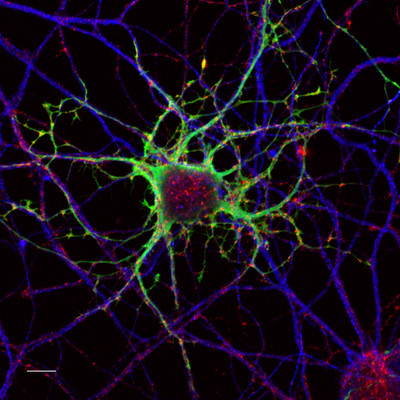41 How Does Memory Work?
Kristel D. Phillips; Tianna Reneé Urrea MacMeans; and Hannah Noel Niccum

In order to learn effectively, we have to be able to remember what we hear/read/see. How we train our memories can make a big impact on our success. Your brain is made up of nerve cells called neurons. When you learn something, the neurons involved create connections among themselves. As you use or practice the information, those pathways become more and more clearly defined and easy to travel. Studying to learn and remember things is a process of creating and strengthening new pathways. If something doesn’t seem important, it is barely processed at all and quickly forgotten. On the other hand, important information can be stored for very long periods of time.
How does your brain know what is important? It is the things that you encode into your memory through elaboration and rehearsal that become likely to “stick.” What is rehearsing and elaboration?
Rehearsing happens when you practice something over and over again. When you practice a piano piece or a football formation, you are rehearsing. This creates a deep pathway so that the action or concept will be easier to retrieve. This is why in math class, you have to do multiple problems of the same kind and repeat them later on as review.
Elaboration happens when you practice something in different ways. For example, to learn a math formula, you use it in class, you go home and teach it to your roommate, and you make up a song about it. Those all create different pathways to the same end—learning the formula! When you need to retrieve that formula, you now have multiple ways to think about it.
Both of these things, rehearsal and elaboration, contribute to encoding.
Encoding is moving sensory input into your working memory. Without encoding, the information just fades. We all know memory is linked to the context it is created in—we often remember the sights, sounds, smells, tastes, and feelings associated with a memory. For example, seeing and smelling a lasagna might trigger a fond memory of being at grandmother’s house on Saturday nights. By creating some of those things around what we need to remember for a subject matter, we are making that memory stronger. Here are some specifics on how to do this.
As noted, both rehearsing and elaboration are important in retrieving the information later on, because both help to encode it into your memory.

While rehearsing is mostly repetition, elaboration can take many forms. To remember those random pictures on a page, you might do something like chunking the information—group things together, or you could try clustering—grouping things together that already have a relationship (all the animals, all the plants, etc.). You could even create a story about the information because that’s easier to remember, and if you give the story some emotion or humor, or both, you will recall it even better!
What all this boils down to is that you need to create meaning out of the facts that you are trying to learn. Memorizing random facts in history is difficult at best, but if you give it some personal meaning, either from a personal experience that you have had in the past or a created meaning through one of the techniques we just mentioned, you are much more likely to be able to memorize the facts.
Keep in mind, you must understand the facts you are trying to memorize, or it will be almost impossible to be successful. So, if you don’t understand the math, or the English assignment, or the science class, go to tutoring, office hours, or ask a classmate! Once you understand the material, you will be much more likely to be able to relate it to something you already know or to use another technique to remember it. Also, every time to practice retrieving the information, you are strengthening those memory pathways. So use the active learning strategies we talked about earlier and practice retrieval often before the test, and you will find that you will have a much easier time.
What kinds of study strategies practice retrieval?
Flash cards—note cards or online (Quizlet, Anki, etc.)
Creating practice quizzes for each chapter (you can easily do this in ChatGPT as long as you give it the proper information to begin with!)
Change the chapter headings into questions and try to answer the questions as you read through the chapter.
Summarize every page or so when reading a chapter. Read, close the book, then write your notes. When you finish, check your info, and you will have a good set of notes from the chapter! You can then use these notes with other study strategies we’ll mention later on.
Studying the subject and practicing the test in the same environment you will take the test (quiet, no phone, etc.) can be powerful. Also, you could try adding something in that will help you remember what you’re studying from a different sense, like chewing a certain flavor of gum (then chew it during the test), or wearing a particular shirt that feels soft, or something else that speaks to you.
Whatever you do to help yourself remember, be consistent, reevaluate after a quiz or test, and see how it’s working for you. If that didn’t work well, think it through and try something else. If it worked well, great! Keep going!
License & Attribution
Phillips, K. D., Urrea MacMeans, T. R., & Niccum, H. N. (Eds.). (2025). Steps to success: Strategies to help you succeed in MATH 100 and beyond, © 2025 Arizona Board of Regents, is licensed under a Creative Commons Attribution-ShareAlike 4.0 International license, except where otherwise noted.

